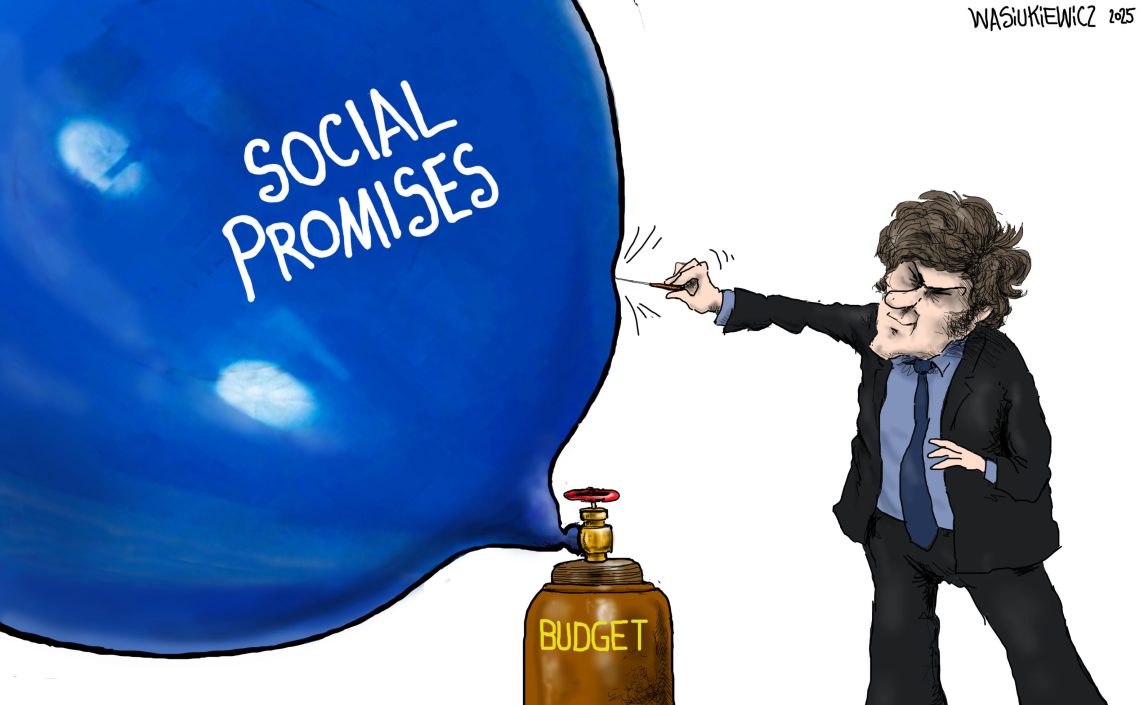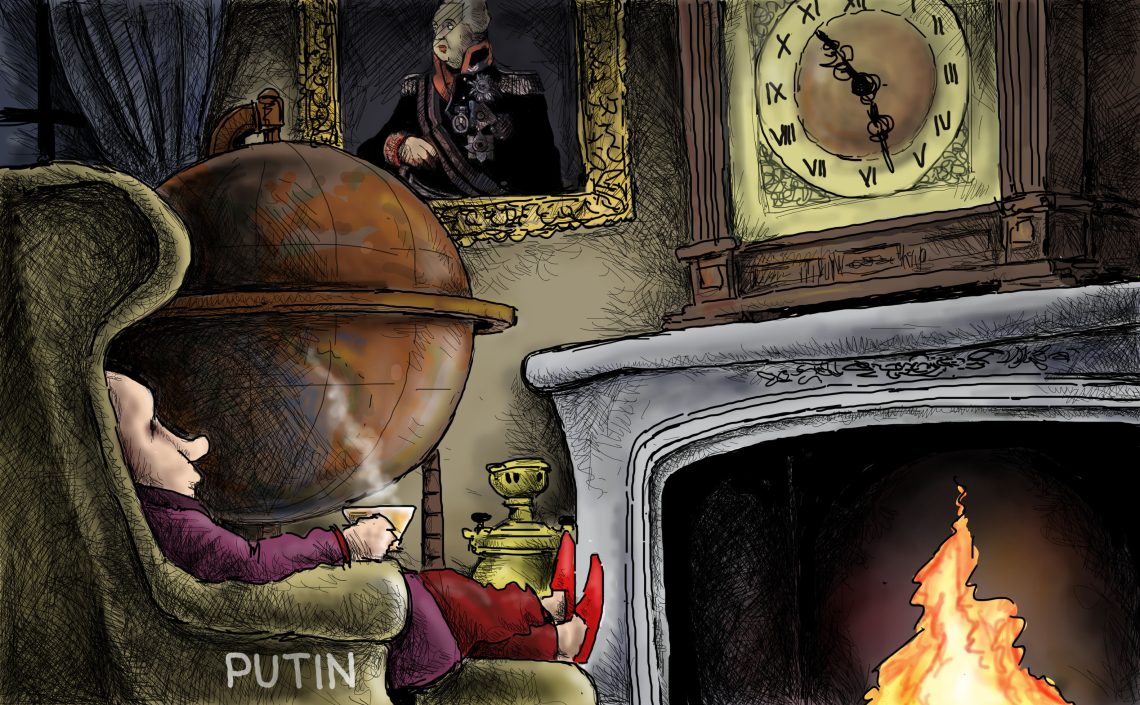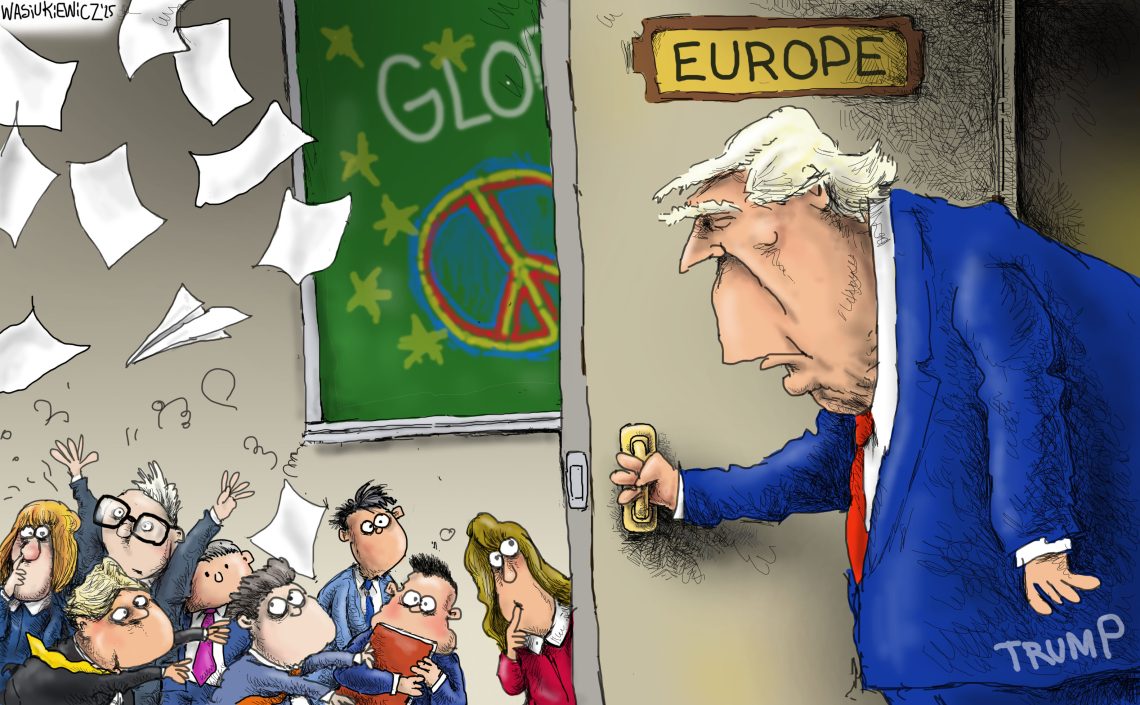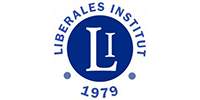Sleepwalking through a minefield
Historian Christopher Clark wrote the impressive book on how the European powers sleepwalked unnecessarily into World War I at the beginning of the last century. Can we learn something from this?
There has been no period in history without war. Europe had the unique chance of a very long peace, mainly protected by the United States after World War II. The U.S. was used to being involved in wars overseas while not being threatened on its territory.
When Russia invaded Crimea and the Donbas in 2014, it was a shock for Europe, but most people considered it as something happening in a “faraway” place. It was widely believed that Russia’s behavior could be resolved through sanctions and diplomatic means. This was wrong and a half-frozen conflict persisted.
The real shock, however, came in February 2022, when Russia launched a full-scale, bloody invasion of a sovereign country. Ukraine defended itself bravely, and it took a long time until Kyiv got real support from the West. Now, still, the West is reluctant to allow Ukraine to attack military targets behind the Russian border, fearing a nuclear response.
Ceasefire versus deterrence
There are now rumors of a ceasefire. Such a cessation of hostilities would be considered a success by Moscow, as Russia would continue occupying vast swaths of Ukrainian territory. It would be naive to believe that President Vladimir Putin would agree to a lasting peace through a ceasefire. It is on the Russian side – and quite independent of who their president is – that one finds the desire to reerect the old Soviet empire, which is a direct threat for the Baltics, among other states on Russia’s doorstep.
The only way to create a more stable situation on Europe’s eastern boundary is through the strong and credible defense of European states, including both the United Kingdom and Turkey. The latter provides a good example of a country vigilantly maintaining a capable military, something that cannot be said about all major European countries. To the contrary, some nations are declaring an intention to increase defense investments, but it is too often not followed by concrete actions.
The Kremlin’s worldview
Considering not only its aims on its western border, but also to enable Russia to become a major power on the huge Eurasian-African landmass, the Kremlin has decided to increase the size and number of its armed forces. Geopolitics is the lens through which Moscow is strategizing.
In this context, the Kremlin sees only two land masses: the old, huge Eurasian-African one, and the Americas as the other. To project power and influence everywhere, a global power needs to be on all oceans and continents. Russia is, however, a power restricted to the Eurasia and so at a minimum it is determined to remain a main leading player there.
The only way to create a more stable situation on Europe’s eastern boundary is through the strong and credible defense of European states, including the United Kingdom and Turkey.
In this context, Europe, being a peninsula on the Eurasian continent but also part of the North Atlantic area, must recognize both the opportunities and threats from its neighbors in the East, Africa and the Middle East. The foreign and security policies of European countries must take that into account. A close collaboration on the Old Continent between countries within and outside the European Union will be necessary. There are tremendous opportunities to work closely with others worldwide; however, Europe cannot perceive Russia as its sole military threat.
Hotspots and bloodshed
The major hotspot, however, is developing in the Western Pacific, in the area of China, Taiwan and the South China Sea. Beijing’s assertiveness is daunting and it threatens neighboring countries from Korea to Japan, the Philippines and the other nine countries in the Association of Southeast Asian Nations (ASEAN). But it is also a challenge for the U.S. Incidents of Chinese aggression are reported daily, and Washington is trying to contain Beijing with a number of defense pacts, such as AUKUS, the Quad and numerous bilateral mutual defense and related agreements.
On the other side, Beijing is seeking to increase its global clout in the emerging world through investment, development projects and associations such as BRICS, the Shanghai Cooperation Organisation and the Belt and Road Initiative (BRI).
The regime in Iran wants to achieve and increase a position of hegemony in the Middle East through terrorism and subversive actions primarily targeting Saudi Arabian and Israeli interests. Conflicts in Iraq and Syria, around Israel and in Yemen are escalating with the potential to entangle world powers. Iran-sponsored terrorists are attacking maritime transport routes, endangering necessary supplies.
Additionally, the danger for Lebanon – torn by warring parties and attacks by Israel – is elevated. It also appears that no solution for the Gaza conflict triggered by the terrorist attacks on October 7, 2023, is on the horizon. A simmering conflict continues unabated in the triangle of India, Pakistan and China; all three of them nuclear powers. In Myanmar a civil war is ongoing.
At present, the worst bloodshed is in Africa: in Ethiopia, the eastern Congo and especially in Sudan. In the Sahel region, we are witnessing the decline of French influence, replaced by Russian largesse and security. The situation in Africa is likely one of the most threatening worldwide, yet it is still not sufficiently recognized in either Europe or the U.S. The huge potential of this growing area is widely ignored in the risk-paralyzed West.
New arenas being contested
And still more recent developments can be found in the polar regions: the Arctic and Antarctic are becoming militarized. In the Arctic we should recognize that the distance between Russia and North America is not immense. Here, a stronger presence of Russian nuclear submarines can now be seen in the Svalbard region in the far North. The Svalbard islands are a Norwegian archipelago between the North Pole and mainland Norway (a NATO member) that is (or should be) demilitarized by international agreements.
A further interest of the Arctic is that Russia and China are preparing the Northern Sea Route, which significantly shortens the distance between Chinese ports and Europe. This is facilitated by global warming clearing paths previously blocked by ice. China, on the other side of the globe, welcomes itself to open spaces in the Antarctic. In the realm of communications, there is a gaping marine weakness: undersea cables that can be attacked by state or non-state terrorists.
Europe could contribute significantly to maintaining peace and stability globally, provided it can show determination, a credible deterrence and the readiness to intervene.
Yet one of the most relevant new areas for military activities is outer space, despite agreements in place to prevent space from being militarized. Nevertheless, such limits and guardrails remain only on paper. Space is extremely important for civil and military communication and the guidance of troops. We must not forget that part of the Ukrainian success in countering Russia came from Elon Musk initially allowing Ukraine to utilize Starlink. But this is just a small part of the possibilities and the importance of space in conflicts.
Awakening to keep the peace
Unfortunately, this list of tension points is not exhaustive, and additional surprises should be expected. Financially, the enormous fiscal-debt conundrum and growing civic instability in societies worldwide – Western democracies not excluded – are exacerbating the fragile situation.
As mentioned, wars and conflicts have always existed, but at present their numbers are multiplying. We know from game theory that the more tension points exist, the greater the likelihood of major wars.
Europe could contribute significantly to maintaining peace and stability around the globe, provided its countries can show determination, the wherewithal to defend themselves, a credible deterrence and the readiness to intervene, if needed.
This comment was originally published here: https://www.gisreportsonline.com/r/sleepwalking-minefield/
































